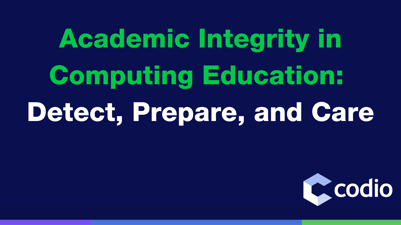Textbooks are outdated
Students had very limited access to information when textbooks first became an educational tool—so they needed to include anything deemed relevant to a given subject. With access to more information than most libraries in their pockets, it no longer makes sense for students to lug around heavy, expensive physical textbooks.
Explore our catalog of editable, interactive course resources.
Two overarching barriers—lack of access due to prohibitive costs and length—make traditional textbooks outdated, inefficient learning resources.
Quantifying the Textbook Problem
- Length
- “94% of students spend less than two hours per reading assignment.” [1]
- Lack of access/cost
- “Student acquisition rates of required college textbooks continues to drop with 65% of students at least once not purchasing a required textbook.” [2]
- “22% of students do not purchase the required textbook.” [2]
“Noting high costs and low usage rates, some teachers have stopped requiring textbooks.” [2] So, what should teachers use instead?
Free and Open Resources
Teachers are increasingly “relying…on various sources like miscellaneous web resources and instructor notes.” [2] This DIY approach to crafting a custom learning experience gives control back to the teacher.
Research even “shows greater student retention and performance when faculty members become more engaged with the classroom materials.” [4]
In addition to saving money and being more effective, free and open resources are hosted on the web, meaning students can access learning materials any time and on a multitude of platforms. Furthermore, electronic publishing means resources can be more easily updated. In fact, in a 2012 survey, 78% responded that OER provided access to more up-to-date material than is available in print textbooks. [5]
Less Text
Research has started to find that the old adage “less is more” is true for instructional text.
Less text (meaning approximately 50% of the original):
- Improves aspects such as completion time, amount remembered, and student satisfaction by 58%.[3]
- Increases student understanding for secondary language learners. [Leow 1997, as cited in 1]
- Doubles learning gains between pre and post tests. [1]
- Raised student satisfaction by 26%. [1]
“One of the problems I saw was the books. They were too big, with too much unnecessary detail...and not enough high-level guidance...I decided to write my own book. My goals were: Keep it short. It is better for students to read 10 pages than not read 50. ….it worked. Students did the reading.” - Allen Downey [6]
Codio provides customizable open texts
- Customize for your class: Codio content can be fully edited, allowing you to remove extraneous topics and text
- Infinite access: Open Education Resources (OERs) are freely available
References
[1] Edgcomb, A., Vahid, F., & Lysecky, R. (2015, October). Students learn more with less text that covers the same core topics. In 2015 IEEE Frontiers in Education Conference (FIE) (pp. 1-5). IEEE.
[2] Edgcomb, A., Vahid, F., Lysecky, R., Knoesen, A., Amirtharajah, R., & Dorf, M. L. (2015, June). Student performance improvement using interactive textbooks: A three-university cross-semester analysis. In the Proceedings of the ASEE Annual Meeting.
[3] Nielsen, J. (1997, October 1). How Users Read on the Web. Retrieved May 14, 2019, from https://www.nngroup.com/articles/how-users-read-on-the-web/
[4] Open Text Books: Making education more accessible. (n.d.). Retrieved May 14, 2019, from http://opentextbookalliance.org/wp-content/uploads/2017/03/Open_Textbook_Alliance_Guide.pdf
[5] Feldstein, A., Martin, M., Hudson, A., Warren, K., Hilton III, J., & Wiley, D. (2012). Open textbooks and increased student access and outcomes. European Journal of Open, Distance and E-Learning, 15(2).
[6] Downey, A. B. (2016). Think Python. Sebastopol, CA: OReilly.




